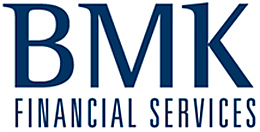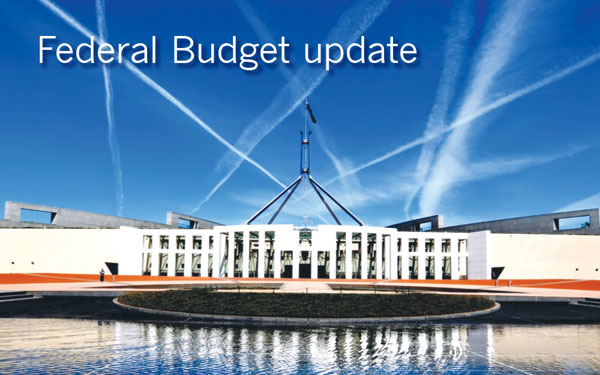Here’s a roundup of some of the key proposals put forward in last night’s Federal Budget. We take a look at how they might affect your financial goals — whether you’re starting out in your working life, building a career, having a family, or moving toward or living in retirement.
Remember, at this stage these are just proposals and not yet law, which means things could change as legislation passes through parliament.
Taxation – General
1. Cuts to personal income tax rates
Proposed effective date: 1 July 2018 and onwards
The government is proposing income tax cuts over seven years through a three-step process:
- Starting in the next financial year (2018-19), a new Low and Middle Income Tax Offset (LMITO) will be introduced to provide a tax cut of up to a maximum of $530 per year for those earning up to $125,333. Under the LMITO measures:
- Those earning up to $37,000 will see their tax payable reduced by a maximum of $200.
- Those earning $37,001 – $48,000 will see their tax payable reduced by up to $530.
- Those earning $48,001 – $90,000 will see their tax payable reduced by the full $530.
- For those earning between $90,001 – $125,333, the offset reduces at a rate of 1.5 cents for each dollar.
- The tax benefits arising from the introduction of the LMITO will be received as a lump sum following lodgment of your tax return. This is in addition to the existing Low Income Tax Offset, currently a maximum of $445 for those earning up to $37,000. This offset is also proposed to increase to up to $645 from 1 July 2022.
- From 1 July this year, the government is proposing to increase the top income threshold of the 32.5% tax bracket from the current $87,000 to $90,000. This change in threshold will give affected taxpayers a maximum tax reduction of $135 (which is in addition to the tax reduction they will receive under the LMITO).This will be followed by a proposed increase in the top income threshold of the 19% tax bracket from $37,000 to $41,000, and a proposed increase in the top income threshold of the 32.5% tax bracket from $90,000 to $120,000, commencing 1 July 2022.
- From 1 July 2024, the government is proposing to remove the 37% tax bracket completely and increase the top income threshold of the 32.5% tax bracket from $120,000 to $200,000.This will mean that the 32.5% tax bracket will apply to people with taxable incomes of $41,001 to $200,000, while those earning more than $200,000 will pay the top tax rate of 45%.
2. Changes to the Medicare levy
Proposed effective date: 1 July 2017
The proposal in last year’s Budget to increase the Medicare levy from 2% of taxable income to 2.5% has been scrapped.
The government is also proposing an increase in the thresholds at which the Medicare levy becomes payable for low-income singles, families, and seniors and pensioners starting this financial year.
The threshold for singles will increase to $21,980, and the threshold for families will increase to $37,089, plus $3,406 for each dependent child or student.
For single seniors and pensioners, the threshold will increase to $34,758, while the family threshold for seniors and pensioners will increase to $48,385, plus $3,406 for each dependent child or student.
Super
3. Work test changes for recent retirees
Proposed effective date: 1 July 2019
Currently, people aged 65 to 74 must work a minimum of 40 hours in a consecutive 30 day period in a financial year in order to contribute to their super.
From 1 July 2019 the government is proposing people with super balances of less than $300,000 will be able to make voluntary contributions to their super for a year following the financial year in which they last met the work test. The changes will give recent retirees additional flexibility to get their finances in order as they transition to retirement.
The existing contribution caps will apply, and they’ll also be able to carry forward any of their unused concessional contribution cap of $25,000 from previous years commencing from 1 July 2018, enabling them to make concessional contributions of more than $25,000 in the following year.
- For example:Jason retires from full-time work on 1 May 2020, aged 66. His total superannuation balance is $280,000 on 30 June 2020.
On 1 August 2020, Jason sells his share portfolio and wants to contribute the proceeds into his super. Under the current rules he doesn’t meet the work test in the 2020-21 financial year, so he can’t make any voluntary super contributions after 30 June 2020.
Under the proposed changes, Jason could contribute $30,000 in concessional contributions in 2020-21 (as he has $5,000 in unused concessional contributions he can carry forward from the 2019-20 financial year). In addition, he could also contribute up to $100,000 in non-concessional contributions in 2020-21.
4. Ability to opt out of SG contributions for some high-income earners
Proposed effective date: 1 July 2018
Currently, some high-income earners unintentionally breach the $25,000 concessional contributions cap due to compulsory (SG) contributions made by multiple employers. This is because each employer must currently meet their quarterly SG obligations, up to the maximum contributions base (ie maximum SG contribution required in 2018-19 is 9.5% of $54,030 per quarter).
From 1 July 2018, individuals will be able to nominate that their wages from certain employers are not subject to the SG if they have both:
- income above $263,157
- multiple employers.
Eligible employees may be able to re-negotiate their remuneration package to receive any foregone SG contributions as salary and wages or, consider other types of salary-packaging benefits.
5. Changes to insurance inside super
Proposed effective date: 1 July 2019
From 1 July 2019, the government is proposing to change taking out life insurance inside super to an opt-in basis for people:
- with super balances of less than $6,000, or
- who are under 25, or
- whose accounts haven’t received a contribution in 13 months.
The changes are intended to ensure that the retirement savings of young people or those with low balances aren’t eroded by premiums on insurance policies they don’t need or aren’t aware of. It will also reduce the likelihood of having duplicate insurance cover in multiple funds.
6. SMSF rules to change
Proposed effective date: 1 July 2019
The government is proposing to increase the maximum number of allowable members in new and existing self-managed super funds, and small Australian Prudential Regulation Authority (APRA) funds, from four to six.
For SMSFs with a history of good record-keeping and compliance, the annual audit requirement will change to a three-yearly requirement. This will apply to SMSFs with a history of three consecutive years of clear audit reports and that have lodged the fund’s annual returns in a timely manner.
7. Greater protection for those with lower super balances and banning exit fees
Proposed effective date: 1 July 2019
Exit fees will be banned on all super funds.
A 3% annual cap will also be introduced on all ‘passive’ fees (such as administration and investment fees) charged by super funds to members with balances below $6,000.
To enhance the current lost and inactive super scheme, the Australian Taxation Office will expand its data matching capabilities to, where possible, reunite any lost super into the member’s active super fund.
8. More retirement income choices for retirees
Proposed effective date: To be advised
The government is developing a framework to provide retirees with more choice around retirement income products.
This includes introducing a retirement income covenant in the Superannuation Industry (Supervision) Act 1993, requiring trustees of APRA-regulated super funds to formulate a retirement income strategy for members.
Trustees will be required to offer Comprehensive Income Products for Retirement (CIPRs), which aim to provide individuals with income for life. However, it will not be mandatory for members to take up a CIPR upon retirement.
No commencement date has been provided for this measure. The government will release a position paper for consultation soon, outlining its proposed approach.
Taxation – Small business
9. Extension of the small business instant asset write off
Proposed effective date: 1 July 2018
The government will extend the $20,000 instant asset write-off by a further 12 months to 30 June 2019 for businesses with aggregate annual turnover of under $10 million.
Small businesses will be able to immediately deduct purchases of assets costing less than $20,000 first used and installed ready for use by 30 June 2019.
Social security and aged care
10. Introduction of means testing of new income streams
Proposed effective date: 1 July 2019
From 1 July 2019, the government is proposing to introduce new means testing rules for new pooled lifetime income streams, including new lifetime annuities and new deferred lifetime annuities.
Under the proposal:
- 60% of all pooled lifetime product payments will be counted as income
- 60% of the purchase price of the product will be counted as an asset until age 84, or for a minimum of five years, reverting to 30% for the rest of the person’s life.
These proposals will not apply to pooled lifetime income streams purchased before 1 July 2019, which will be subject to the current means test rules. Means testing of flexible account based pensions and existing annuities won’t change under this measure.
11. Extension of the Pension Work Bonus
Proposed effective date: 1 July 2019
The government is proposing to increase the work bonus for employees who have reached their Age Pension age to $300 per fortnight, up from $250 per fortnight, from 1 July 2019.
The work bonus allows employees to reduce the amount of employment income they have assessed under the income test for social security purposes.
It’s also proposing to extend eligibility for the work bonus to the self-employed. Currently, the work bonus is only available to employees (including those employed by their own company) but not to sole traders or partners in a partnership.
12. Extension of the Pension Loans Scheme
Proposed effective date: 1 July 2019
The Pension Loan Scheme is basically a reverse mortgage scheme administered by Centrelink, which allows those receiving a part Age Pension and those who are not receiving an Age Pension payment (because they’ve failed either the income or the assets test) to be paid a ‘top up’ loan to ensure they receive the equivalent of the full Age Pension amount.
The government is proposing expanding eligibility for the scheme to all Australians of Age Pension age, including those on the full Age Pension and self-funded retirees, from 1 July 2019.
Under the proposal, the maximum allowable combined Age Pension and scheme loan will be 150% of the full Age Pension rate.
- For example:Susan is a single age pensioner who currently receives the full Age Pension of $23,598 per year. Under the proposed changes, Susan can increase her annual payment to $35,397 which will include her $23,598 in Age Pension and a tax-free loan amount of $11,799, repayable when her property is sold.
13. Access to aged care improvements
Proposed effective date: 1 July 2018
To support individuals who choose to access aged care services in their homes, the government will provide an additional 14,000 high level home care packages over four years.
An extra 13,500 residential aged care places will be released in the 2018-19 Aged Care Approvals Round.
To help people make informed decisions about their aged care needs, the government will trial a comprehensive navigator service for the aged care system.
The aged care service finder functionality will be enhanced, and simpler aged care assessment forms will be introduced.
 Contact Brad Lonergan (Financial Planner Newcastle and Lake Macquarie) for more information about the Australian Federal Budget for Newcastle and Lake Macquarie residents.
Contact Brad Lonergan (Financial Planner Newcastle and Lake Macquarie) for more information about the Australian Federal Budget for Newcastle and Lake Macquarie residents.
Call 0423 621 120 or email brad@bmkfs.com.au







